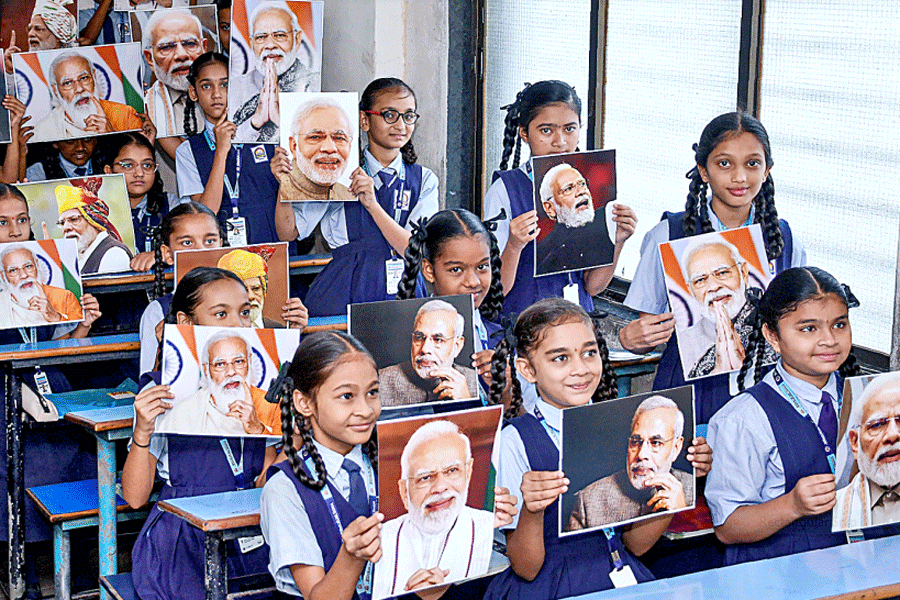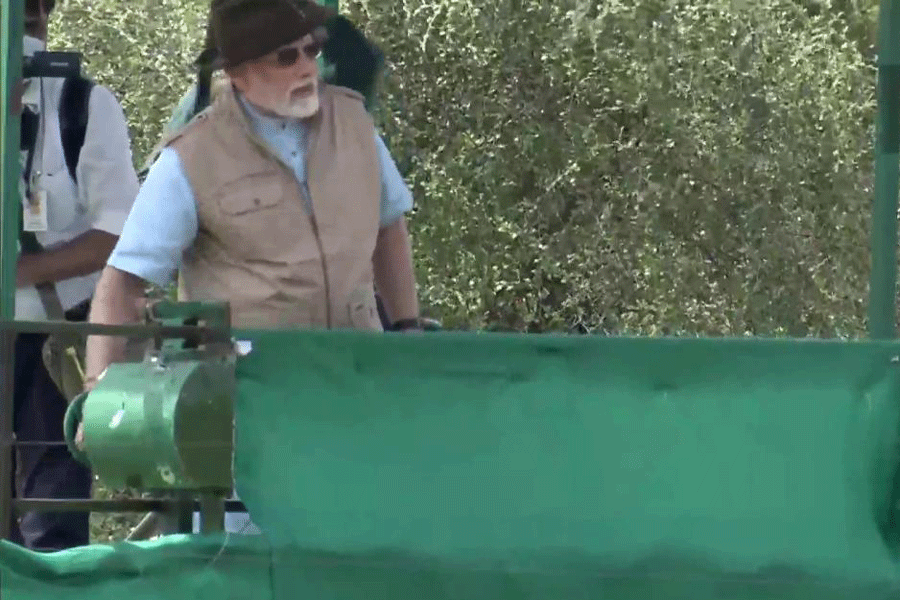India is preparing to import a fresh batch of cheetahs from South Africa, an official said on Saturday in a media interview that some wildlife experts interpreted as an “all-is-well” message on the eve of the first anniversary of the cheetahs’ arrival from Namibia.
The next batch of cheetahs will be imported from South Africa and introduced into Madhya Pradesh’s Gandhi Sagar wildlife sanctuary, S.P. Yadav, chief of the National Tiger Conservation Authority (NTCA), the environment ministry agency implementing the cheetah project told the PTI news agency.
The Gandhi Sagar wildlife sanctuary will be ready to welcome the cheetahs by 2023-end, he said.
The environment ministry had flown in eight cheetahs from Namibia into Madhya Pradesh’s Kuno National Park last year on September 17 -- Prime Minister Narendra Modi’s birthday -- where Modi himself received the animals.

Students show portraits of Prime Minister Narendra Modi as they celebrate his birthday in Surat on Saturday. PTI picture
India had also imported 12 additional cheetahs from South Africa in February this year and four cheetah cubs were born in captivity in Kuno. But three of the four cubs and six adults have died since March this year, including at least two deaths attributed to maggot-infestation and infections near neck collars.
For the next batch of cheetahs, India will look for cheetahs that do not develop thick winter coats, Yadav told PTI. A thick winter coat, he said, was a primary factor behind severe infections in some cheetahs and the deaths of three. Yadav also told the news agency that the project’s focus in its second year would be on breeding these animals.
Wildlife biologists in India who have criticised the cheetah project saying it was poorly planned with inadequate preparations and disregard of cheetahs’ need for vast spaces said on Saturday that all the cheetahs remain within fenced enclosures a year after their arrival.
After the deaths of two adults from severe infections in July this year, project authorities decided to move all within fenced enclosures for observations. Some experts have criticised the project for the deaths and for the long periods of captivity.
Project officials, however, have asserted that they had anticipated some cheetah deaths and the nine deaths should not be viewed as a setback to the project’s long-term goals. The project document defines even a 50 per cent mortality in the first-year of introduction among criteria for short-term success.
“With 14 of the 20 imported cheetahs alive, we’ve had a mortality of 30 per cent which is within the defined range for short-term success,” a foreign expert advising the project had told this newspaper after the death of the sixth adult last month.
The long-term goal of the cheetah project is to establish clusters of wild cheetahs in several wildlife sanctuaries across the country.










